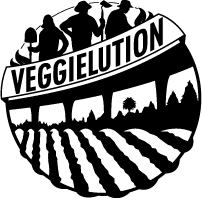What is an SOP?
As part of the MFF application and renewal process, all SCC-permitted vendors must submit their Standard Operating Procedures (SOPs) to the county. This is a set of instructions that describes all the relevant steps and activities the MFF vendor will carry out during the course of their business (see Appendix A for an example of Veggielution’s SOPs). At Veggielution, this is communicated to SCC officials by Catherine Aisbitt, our Operations Manager. However, if you are the owner of your own MFF, establishing an approved set of SOPs with the SCC will be your responsibility!
As the MFF owner or staff member, you agree to abide by the SOPs you submit. Stated another way, the SCC holds you accountable for your SOPs, so know your Standard Operating Procedures!
Creating Your Own Set of SOPs
Although it might be intimidating at first, MFF owners actually work with the SCC’s inspectors to review and revise their SOPs. So don’t worry about producing something perfect on the first try!
As stated in the SCC’s MFF Application Packet (see Appendix A), your SOP submission must include the following:
The name and address of the commissary kitchen you intend to use for advanced food preparation (i.e. washing, rinsing, cooling, thawing, slicing, chopping, etc).
A list of all the food items you’ll use that require advanced preparation, along with a brief description of how you’ll prepare them. (As per regulations, you cannot wash or rinse food in your MFF!)
Good descriptions should include information on exactly how the items will be prepped. For example, suppose you are going to make a burrito. Your list might look something like the following:Tomato (washing and slicing)
Rice (rinsing and cooling)
Lettuce (rinsing and chopping)
Beans (rinsing and cooling)
Cooked chicken & beef (cooling)
Frozen chicken (thawing)
List the sinks you intend to use for washing, rinsing, thawing, and cooling. Note the sinks location.
The purpose of this section is to show the SCC that you have access to sanitary facilities, separate from your MFF, for food prep, and that you are not only aware of the risks of cross contamination, but are taking preventative measures. Since food may not be prepared at a warewash or hand sink on a MFF, you must have access to a separate, designated sink. Most commissary kitchens will have such facilities available, as well as a separate sink for hand washing.
If applicable, a description of your thawing process. (As per regulations, you cannot thaw food in your MFF!)
For a detailed description of each of the permitted thawing methods, refer back to Section II: Fundamentals of Food Handling.If applicable, a description of your cooling process and methods. (As per regulations, you cannot cool food in your MFF!) Include enough information to describe how you’ll achieve the SCC’s food cooling requirements, which are as follows:
Foods must cool from 135˚F to 70˚F within 2 hours.
Foods must cool from 70˚F to 41˚F within 4 hours.
Examples of valid methods include:
Dividing the food into smaller, thinner portions
Use shallow food containers and monitor the food temperature using a thermometer
Use ice water baths and/or ice paddles while stirring the food frequently (in this case, the food container should be embedded in the ice bath, not floating)
Use a blast chiller
Use ice as an ingredient
Good descriptions should answer the following questions:
If you intend to use a refrigeration unit: Which kind of refrigeration unit will it be? At what temperature will you be ready to place the uncovered food on the unit’s top shelf?
How will you monitor the food to ensure it reaches the required temperatures in the required amount of time?
When will the food be covered?
How you’ll handle leftover hot food. Potentially hazardous foods held at or above 135˚F in holding units (i.e. steam table, hot holding cabinet, etc.) must be disposed of at the end of the business day. The law prohibits food that was once held hot from being cooled, reheated and served on another business day.
Important notes:
1. MFFs may not be used for washing, rinsing, cooling, or thawing vegetables, meats, poultry, or seafood.
2. Stainless steel food containers transfer cold temperatures faster than plastic food containers.
3. Hot holding is not permitted on non-occupied mobile food facilities (this means food carts). Exceptions: Carts that serve hot dogs or tamales, or carts that roast corn.Although not officially required, we at Veggielution also include information about how we intend to dispose of waste. This includes:
Greywater disposal
Greywater can’t just be dumped anywhere once you’re done operating for the day. Instead, you’ll want to use an official disposal site. Most commissary kitchens have a number of facilities and services, including a drain for disposing of greywater from food trucks.
We at Veggielution approach greywater disposal by storing the greywater from food carts in bins. Similarly, dirty water in our truck is stored in a tank. After an event, we use our food truck to transport all our greywater to our commissary kitchen, where we then pour the water down a drain allocated for this specific purpose.
Solid waste disposal
Unless the event you’re working provides an official waste disposal area, all waste from your MFF should be kept and disposed of at your commissary kitchen.

